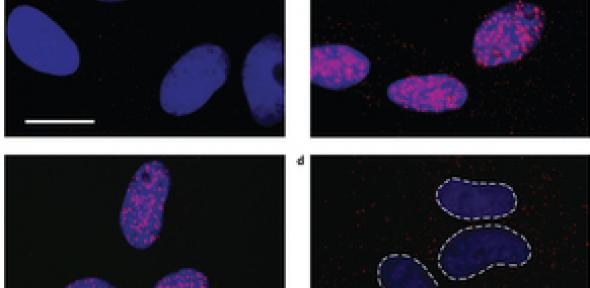
Shankar Balasubramanian’s group has found evidence for the presence of G-quadruplex structures in RNA within the cytoplasm of human cells. The work has been published in Nature Chemistry.
The four-stranded G-quadruplex structures are well characterised in isolated DNA, and earlier this year the group showed that they exist in the nucleus of human cells, too. However, until now, it was not known whether the analogous four-stranded RNA structures – also well known in vitro – existed in cells, too.
A similar approach was taken to the one they used with DNA. A G-quadruplex structure-specific antibody was used to visualise the RNA structures within the cytoplasm of human cells.
They also created a new synthetic molecule, designed to be selective for RNA quadruplexes over DNA quadruplexes. ‘Because we can now visualise both the DNA structures in the nucleus and the RNA structures in the cytoplasm and distinguish between them, we could prove that the molecule specifically trapped RNA in the cytoplasm, without doing anything to the DNA structures in the nucleus,’ Shankar says. ‘This is an important step towards potential chemical intervention studies.’
